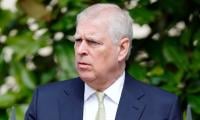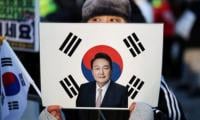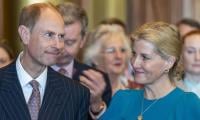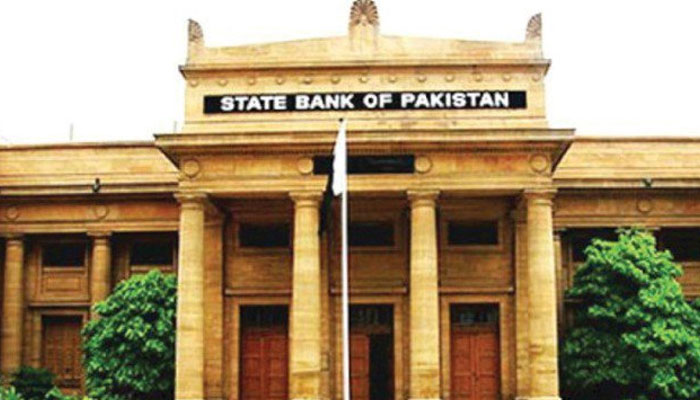SBP raises interest rate by 150bps to 10 percent as rupee fall fans inflation fear
KARACHI: The State Bank of Pakistan (SBP) on Friday ramped up its benchmark interest rate by a more-than-expected 150 basis points to 10 percent, after the rupee hit new lows but analysts said the increase is likely to put a further dent in economic growth, which has already trimmed to little over 4 percent for the fiscal 2019.
“Further consolidation is required to ensure macroeconomic stability and therefore has decided to raise the SBP policy (target) rate by 150 bps (basis points) to 10 percent effective from 3rd December 2018,” the State Bank of Pakistan (SBP) said in a statement.
The central bank has pushed up the policy rates by cumulative 425 basis points since January. The current rate is four-year high.
Analysts were expecting 50 to 100 basis points increase in the interest rate. They were surprised over the latest unexpected hike that they said might be a progeny of a considerable 3.8 percent rupee devaluation on Friday.
“In a poll of 13 brokers, 12 analysts expected 100 basis points increase while one analyst expected 50 basis points increase,” brokerage Topline Securities said in a flash note.
The SBP said projected average headline consumer price inflation for FY2019 in the forecast range of 6.5–7.5 percent, above the annual target of six percent, though “the recent decline in international oil prices could potentially play a positive role in slowing down the current inflation trajectory”.
“The near term challenges to Pakistan’s economy continue to persist with rising inflation, an elevated fiscal deficit and low foreign exchange reserves,” the central bank said.
Ashfaque Khan, who is a member of government’s Economic Advisory Council, said one percent increase in discount rate will add half a percent of GDP increase in budget deficit.
“Resultantly, a 0.7 budget deficit goes up,” Khan added.
The SBP realised that there might be a notable moderation in economic activity during the current fiscal year given the quarterly decline in large scale manufacturing, “reflecting a short term cost of pursuing macroeconomic stability”.
SBP projected real GDP growth for FY19 at slightly above four percent, which was a further diversion from its previous 4.7 percent projection in the annual state of economy report last month, and is much below the annual target of 6.2 percent.
The International Monetary Fund and World Bank forecasts suggest the Pakistani economy is likely to grow by four to 4.5 percent for the year fiscal year ending June 2019 compared to 5.8 percent growth in the last fiscal year.
The SBP said the lagged impact of the 275 basis point increase in the policy rate since January and other policy measures are likely to contain domestic demand during the current fiscal year. Initial estimates for major crops, except wheat, are expected to fall short of levels achieved in the last year.
“The slowdown in commodity producing sectors is expected to limit the expansion in the services sector as well,” it added.
The SBP further said contraction in non-oil imports and constant increase in exports and workers’ remittances narrowed external current account deficit by 4.6 percent to $4.8 billion in the July-October period.
“Although narrowing, the current account deficit is still high,” it said.
The SBP expected its strained foreign exchange reserves to get succor from higher foreign inflows from both private and official sources during the second half and after the availability of recent bilateral arrangements including the deferred oil payments facility from January 2019 onwards.
“The projected decrease in the current account deficit that could be further supported by the recent decline in international oil prices will instill confidence in the foreign exchange market,” it said.
“These developments would help reduce pressures on SBP’s net liquid foreign exchange reserves.”
-
 Jon Bon Jovi Joins The Viral 2016 Throwback Trend With Nostalgic Photos
Jon Bon Jovi Joins The Viral 2016 Throwback Trend With Nostalgic Photos -
 Kate Middleton Hailed For Her Lack Of ‘obligation’ As Well As Altruistic, Selfless Qualities
Kate Middleton Hailed For Her Lack Of ‘obligation’ As Well As Altruistic, Selfless Qualities -
 Jason Momoa Says Being With Beau Adria Arjona Feels 'perfect'
Jason Momoa Says Being With Beau Adria Arjona Feels 'perfect' -
 Idris Elba Says One Mix-up Nearly Cost Him A Knighthood From King Charles
Idris Elba Says One Mix-up Nearly Cost Him A Knighthood From King Charles -
 Andrew Mountbatten Windsor Incurs Anger Of Biggest Royal
Andrew Mountbatten Windsor Incurs Anger Of Biggest Royal -
 Megan Fox, Machine Gun Kelly's Relationship 'is Just About Co-parenting'
Megan Fox, Machine Gun Kelly's Relationship 'is Just About Co-parenting' -
 Prince Harry, Meghan Markle Warned They Can’t Fool Brits Because It Won’t Land
Prince Harry, Meghan Markle Warned They Can’t Fool Brits Because It Won’t Land -
 South Korea’s Ex-president Yoon Suk Yeol, Sentenced To 5 Years In Prison: Key Details Explained
South Korea’s Ex-president Yoon Suk Yeol, Sentenced To 5 Years In Prison: Key Details Explained -
 Princess Beatrice Is ‘terrified’ Of Mom Fergie: ‘She’s Begging Her To Not Destroy Her Future’
Princess Beatrice Is ‘terrified’ Of Mom Fergie: ‘She’s Begging Her To Not Destroy Her Future’ -
 Harry Styles’ New Album Earns Subtle Nod From Zoe Kravitz’s Dad
Harry Styles’ New Album Earns Subtle Nod From Zoe Kravitz’s Dad -
 Ari Emanuel Makes A Decision Regarding His Memoir Alongside Prince Harry’s Ghostwriter
Ari Emanuel Makes A Decision Regarding His Memoir Alongside Prince Harry’s Ghostwriter -
 Buckingham Palace Gives The Spotlight To The Duke And Duchess Of Edinburgh: Video
Buckingham Palace Gives The Spotlight To The Duke And Duchess Of Edinburgh: Video -
 Eva Mendes Revisits Year She Hid Pregnancy
Eva Mendes Revisits Year She Hid Pregnancy -
 Andrew’s Eviction Marks: ‘the End Of Grifting’: ‘It A Catastrophic Fall From Grace’
Andrew’s Eviction Marks: ‘the End Of Grifting’: ‘It A Catastrophic Fall From Grace’ -
 ASAP Rocky Disses Rihanna's Ex Drake In New Track
ASAP Rocky Disses Rihanna's Ex Drake In New Track -
 Jennifer Aniston, Jim Curtis Face One Major Hurdle In Their Union
Jennifer Aniston, Jim Curtis Face One Major Hurdle In Their Union




